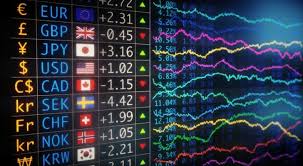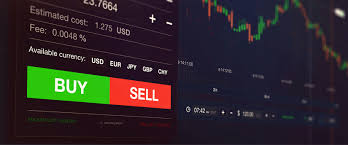
In the fast-paced world of Forex trading, having the right tools is essential for success. One of the most critical tools traders utilize are indicators. These indicators help traders analyze market trends, identify potential entry and exit points, and develop robust trading strategies. Among the numerous indicators available, some stand out due to their effectiveness and reliability. In this article, we will delve into the best indicators for Forex trading to help boost your trading game. Make sure to check best indicators for forex trading Trading Platform VN for more insights and tools to enhance your trading experience.
1. Moving Averages
Moving averages (MA) are among the most popular indicators used by Forex traders. They smooth out price data to create a trend-following indicator. There are two main types of moving averages: simple moving average (SMA) and exponential moving average (EMA). The SMA takes the average price over a specific period, while the EMA places more weight on recent prices, making it more sensitive to new information. Traders often use moving averages to determine the direction of the trend and to identify potential reversal points.
2. Relative Strength Index (RSI)
The Relative Strength Index is a momentum oscillator that measures the speed and change of price movements. It ranges from 0 to 100, with values above 70 indicating overbought conditions and values below 30 indicating oversold conditions. Traders use the RSI to identify potential reversal points by observing divergences between the RSI and the price. This can signal an impending trend change, making it a valuable tool in a trader’s arsenal.
3. Moving Average Convergence Divergence (MACD)
The MACD is another popular momentum indicator that shows the relationship between two moving averages of a security’s price. The MACD is calculated by subtracting the 26-period exponential moving average (EMA) from the 12-period EMA. The result is the MACD line, which is then plotted against the signal line (9-period EMA of the MACD). Traders look for crossovers, divergences, and the MACD histogram for potential buy or sell signals, making it a comprehensive tool for trend analysis.

4. Bollinger Bands
Bollinger Bands consist of a middle band (SMA) and two outer bands that are standard deviations away from the SMA. This indicator helps traders assess market volatility and potential price levels. When the price approaches the upper band, it may indicate overbought conditions, while a price nearing the lower band may indicate oversold conditions. Traders often use Bollinger Bands in conjunction with other indicators, such as the RSI, to enhance their trading decisions.
5. Fibonacci Retracement
Fibonacci retracement levels are technical indicators based on the Fibonacci sequence. Traders use key Fibonacci levels (23.6%, 38.2%, 50%, 61.8%, and 100%) to identify potential reversal levels in the market. By drawing retracement levels from a recent high to a low, traders can predict where the price may retrace before continuing in the original direction. This tool is particularly useful for identifying potential support and resistance levels during pullbacks.
6. Stochastic Oscillator
The Stochastic Oscillator is a momentum indicator that compares a particular closing price of a Forex pair to a range of its prices over a specific period. It is displayed as two lines: %K and %D. Typically, a reading above 80 indicates that the asset is overbought, while a reading below 20 indicates that it is oversold. Traders make use of this indicator to find entry and exit points, particularly in ranging markets.
7. Average True Range (ATR)
The Average True Range is a volatility indicator that measures market volatility by decomposing the entire range of an asset price for that period. It provides insights into market dynamics, helping traders gauge whether the market is likely to be trending or ranging. The ATR does not indicate the market direction but rather the degree of volatility, which is crucial for setting stop-loss orders and adjusting trade size.

8. Ichimoku Cloud
The Ichimoku Cloud is a comprehensive indicator that provides information about support and resistance levels, trend direction, and momentum in a single glance. It consists of five lines, each providing unique insights into the market. Traders use the Ichimoku Cloud to identify trends, determine entry and exit points, and assess the market’s overall health. It is particularly effective in trending markets but can also be used in ranging conditions.
9. Volume Indicators
Volume indicators are essential for confirming price movements and identifying potential reversals or breakouts. High volume during a price increase suggests strong buying interest, while high volume during a price decrease indicates strong selling interest. Traders often look for volume spikes in conjunction with other indicators to validate their trading decisions.
10. Order Book and Level II Market Data
While traditional indicators rely on historical price data, order book and Level II market data provide real-time insights into supply and demand. By analyzing the order book, traders can see where buy and sell orders are placed, which can help in anticipating price movements before they occur. This information is particularly useful for short-term traders who need precise entry and exit points.
Conclusion
Selecting the best indicators for Forex trading is an essential aspect of a successful trading strategy. While no single indicator is foolproof, using a combination of these tools can help traders make informed decisions and adapt to market dynamics. Understanding these indicators and how to apply them effectively will enhance your trading skills and increase your chances of success in the Forex market. Always remember to combine technical analysis with risk management and a disciplined trading approach for optimal results.
